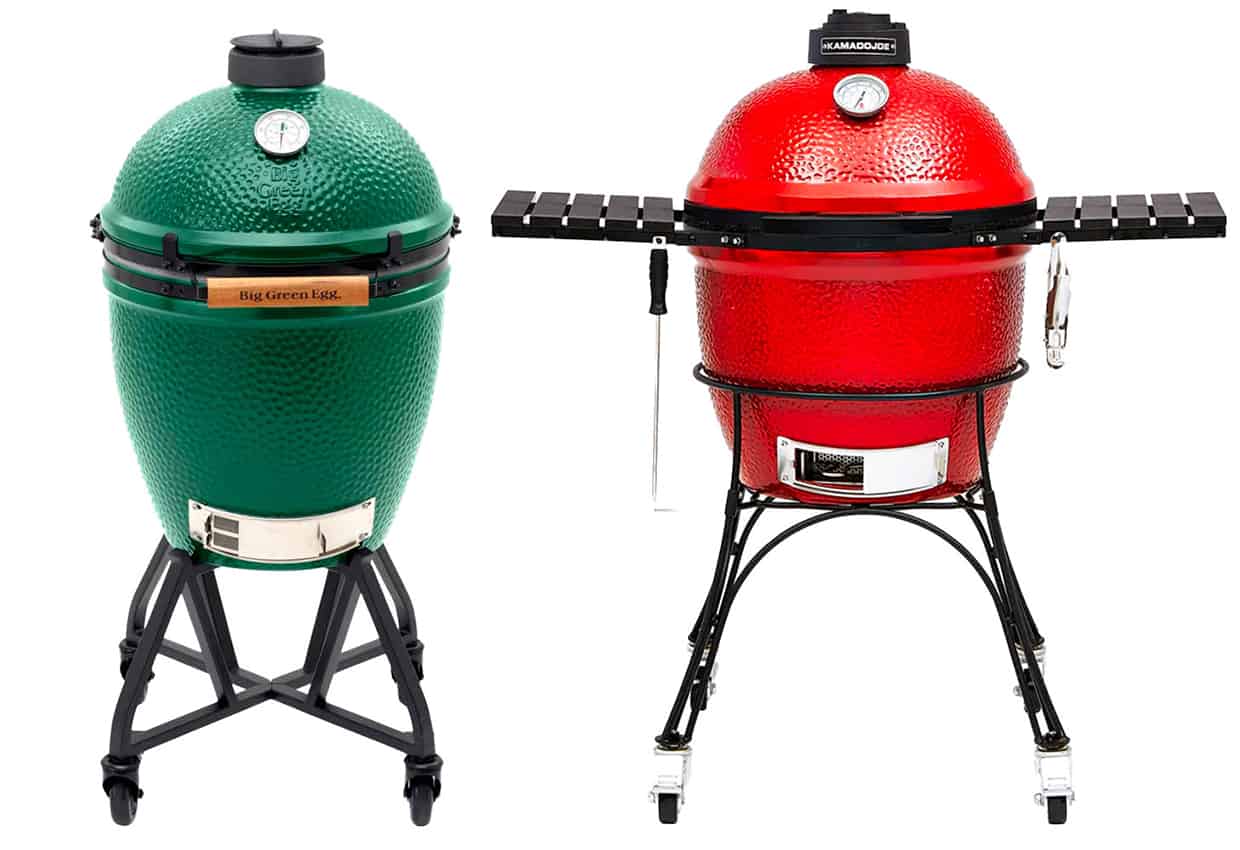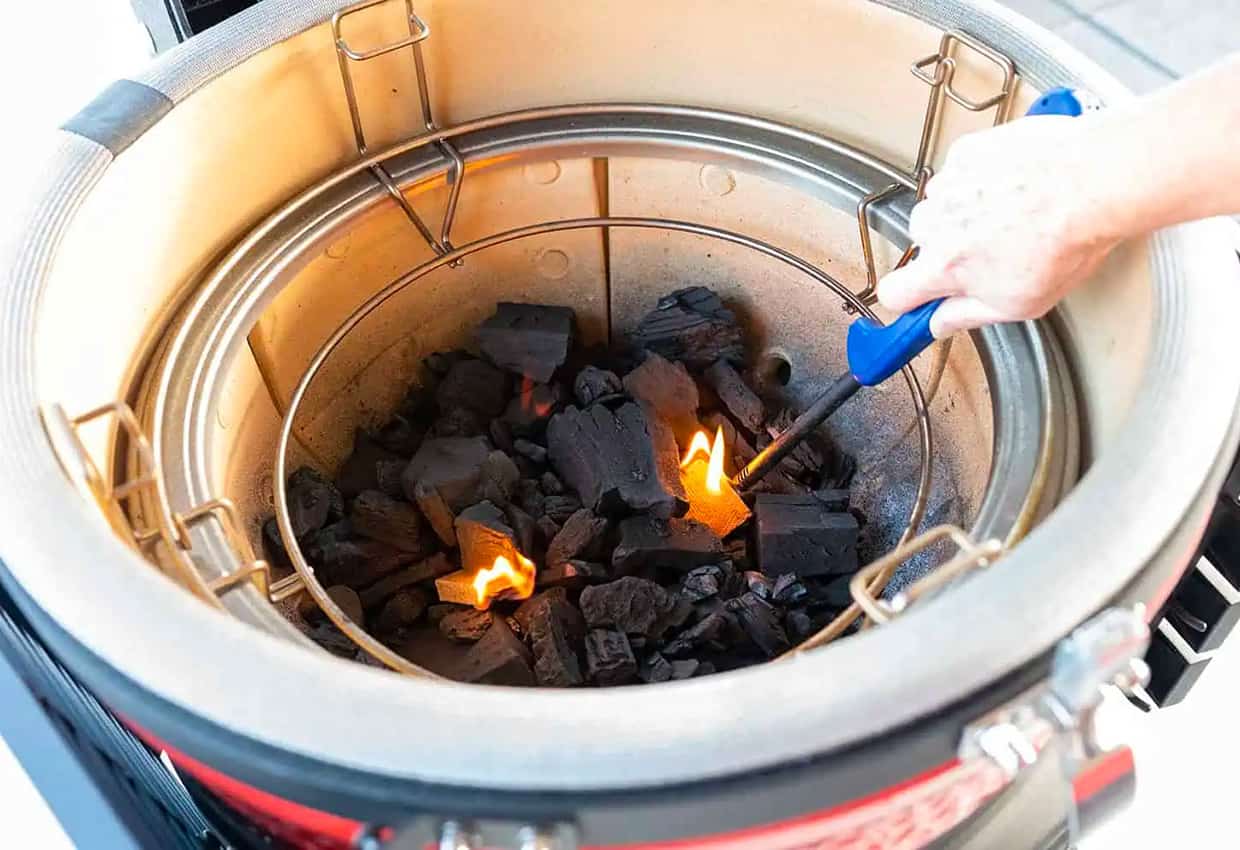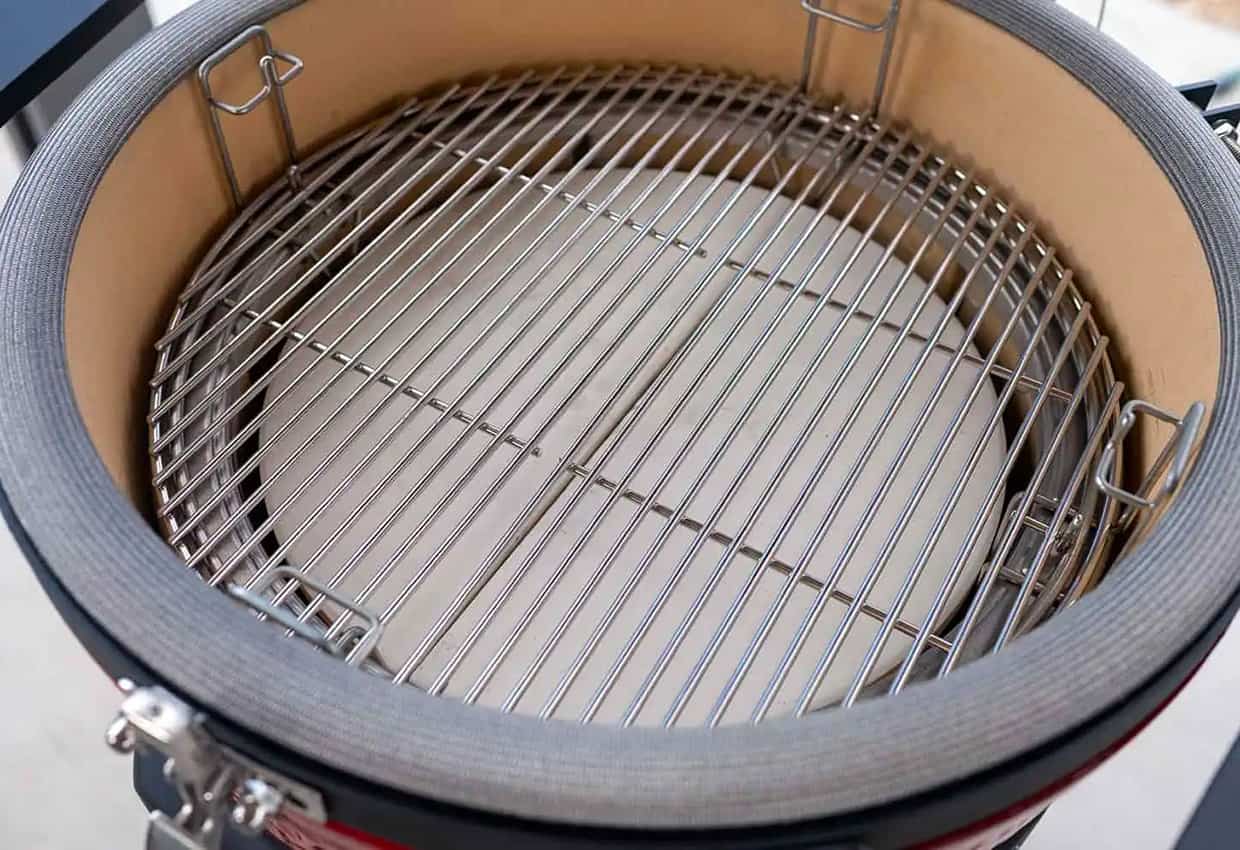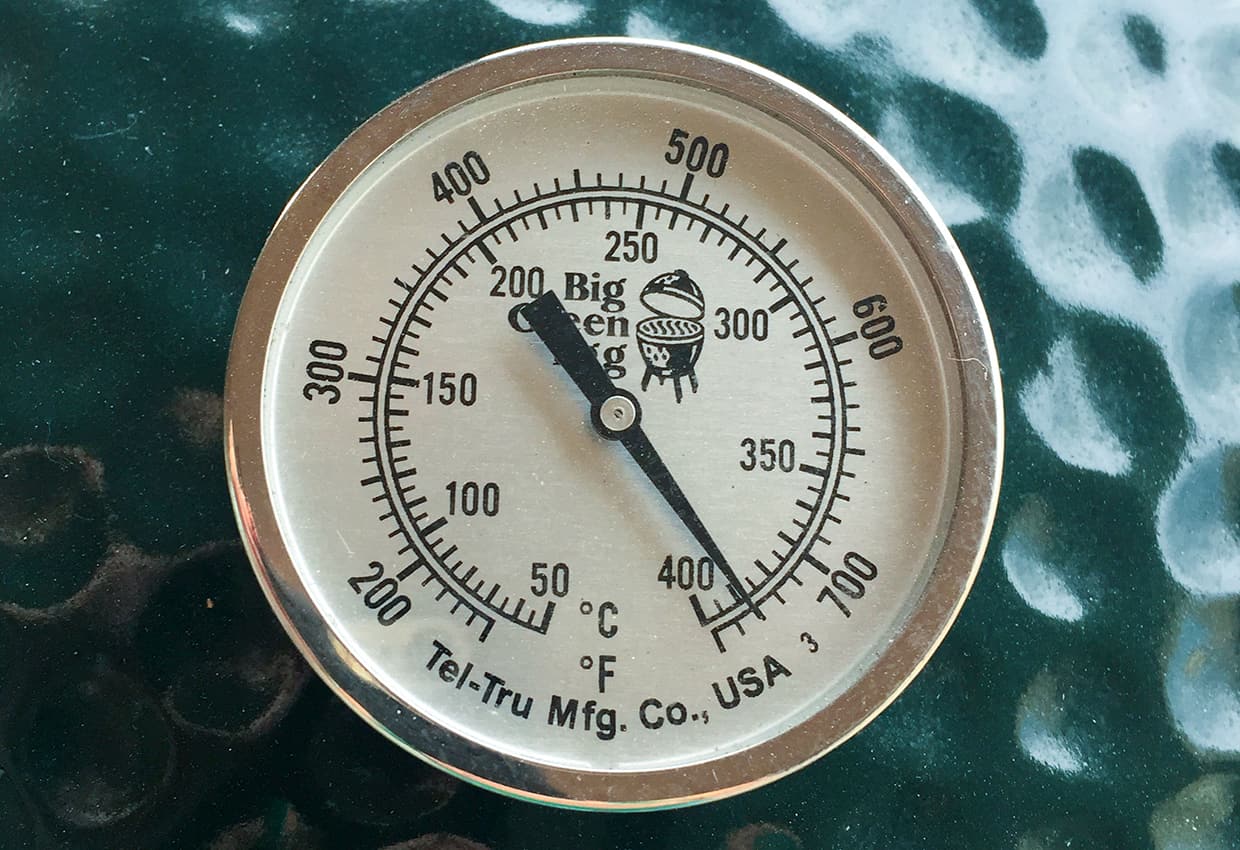Elevate your backyard cookouts with a kamado grill. This versatile, egg-shaped wonder will revolutionize the way you grill, smoke and bake.

Don’t be fooled by its charming appearance; behind those ceramic walls lies a fiery powerhouse that can turn mere ingredients into mouthwatering magic.
Here are the basics on how to light it, how to cook on it, how to clean it and its advantages and disadvantages.
Filled with appetizers, salads, sides, mains and desserts, Food Drink Life's cookbook will become your favorite!
- Easy and delicious recipes from a variety of top chefs and recipe developers.
- Bright, colorful pictures on every page.
- Printer-friendly recipes that you can download instantly to your device.
- Printable shopping list and a kitchen conversion sheet.
What is a kamado grill?
A kamado grill is an egg-shaped charcoal grill that originated in Japan.
Most kamado grills sold in the U.S. are made of ceramic or stainless steel. Ceramic is the most popular because it retains heat very well and distributes it evenly throughout the cooking chamber.
The exterior is usually covered in a dimpled colorful ceramic finish. Big Green Eggs are green, Kamado Joes are red and other kamado grill brands vary in colors but are generally black.
Charcoal is loaded in the bottom of the grill and is controlled by a vent in the bottom and an exhaust that’s located in the hinged lid.
One of the key features of a kamado grill is its versatility. It can maintain a wide range of temperatures, from low-and-slow smoking temperatures around 225 F to high-heat searing temperatures above 700 F. This makes it suitable for cooking a variety of foods, including meats, vegetables, pizzas, bread and even desserts.
How to light a kamado grill
Before you get grilling, check out these grilling safety tips. Then, start by removing the grill grate and ceramic deflector plate.
Add charcoal into the bottom of the grill. You can use lump charcoal or charcoal briquets. Lump charcoal will create a hotter, faster burn and less ash. Briquets will burn a little lower and longer and produce more ash.
Never use lighter fluid. The liquid will absorb into the ceramic and taint the flavor of your food.

Nestle a fire starter into the coals and light it. Once the coals start to light, add the deflector plate and grill grate back inside. Close the lid and adjust the bottom vent and top exhaust.
You want enough air to enter the chamber to keep the fire going, but you don’t want to add so much air that you produce large flames. If you do that, the grill will get too hot too fast and it will be difficult to reduce the heat.
Once the smoke turns from white to almost clear, the smoke is considered clean and ready for cooking. Adjust the bottom vent opening so it’s about one-quarter to one-half inch wide.
Then, adjust the top vent. The wider it’s open, the higher the grill temperature will rise.
You can also purchase after-market fans to automatically control the temperature. The fan installs on the bottom vent and blows air into the chamber when it needs to fuel the fire and increase heat.
The Kamado Joe Konnected Joe, which was released in 2023, is the first digital ceramic cooker that has a blower fan as a built-in feature.
How to cook on a kamado grill
Cooking on a kamado grill is essentially like cooking on any other grill. You just need to decide if you want to cook over direct heat or indirect heat.
For direct heat, you’ll only add the grill grate to the cooker. For indirect heat, you’ll use the ceramic deflector. This will act to block the intense heat from hitting your food, so you can smoke or bake foods without burning the bottom.

When adding the deflector on the Big Green Egg, place the feet up and place the grill grate on top. This allows air to flow evenly under the grate.
With the Kamado Joe or Primo Grill, add the ceramic deflector to the bottom part of the rack and add the grate onto the top part of the rack.
The deflectors are not meant for cooking. If you place a

Adjust the grill’s vents until the included thermometer in the lid registers the temperature you need for your recipe. Then, add your food.
If you want to experiment without the risk of losing out on a lot of money, cook up these cheap cuts of meat that are great for grilling.
How to clean a kamado grill
In between each cook, it’s important to clean out any ash residue. You can purchase accessories like a Kick Ash basket that helps shake ash loose from the partially burned coals. Or, you can use the grill’s included ash tool to push ash toward the bottom.
Once the ash releases to the bottom of the grill, open the bottom vent and remove the ash. If you have a Big Green Egg, you’ll use the ash tool to pull the ash out into a bucket. The Kamado Joe has an ash drawer, so you can just pull out the drawer and dump the ash.
It’s also important to scrape food residue off the grill grate in between cooks.
Every few months you can also clean the ceramic by cranking the heat up to 600 F and letting it burn for about 40 minutes. This will burn off any residue.
Never use soap, water or any cleaning solutions to clean the inside ceramic in a kamado grill. You can wipe the exterior finish with a damp cloth.
It’s also best to keep your grill covered between uses.
Advantages of a kamado grill
The design of a kamado grill allows for efficient fuel usage. Due to its insulation and airflow control, it requires relatively small amounts of charcoal compared to traditional grills. The thick ceramic walls also help to retain moisture, resulting in juicier and more flavorful food.
Kamado grills can be used to cook various foods including smoked brisket cooked low and slow, reverse-seared cowboy ribeye steaks, baked goods and even Neapolitan pizzas.
There are several accessories available for kamado grills, such as griddles, woks and rotisseries.
Once you shut down the grill and extinguish the coals, several partially burned coals will remain inside. You can reuse those coals once you remove any loose ash.
Disadvantages of a kamado grill
They are generally more pricey than other grills and smokers. Most full-size models cost around $1,000, with larger models costing upwards of $2,000.
Kamado grills hold heat really well. Sometimes too well. If you get the grill to a higher temperature like 400 F, it’s really hard to reduce the heat down to 225 F. Therefore, it’s best to start cooking at a lower temperature and then increase the temperature toward the end.
Most kamado grills are round, which limits your cooking space. Larger models can hold two racks of ribs on one grate, but smaller models limit the amount of food you can fit. The Primo Grill is oval so it has a longer length, allowing larger briskets to fit easier.
Kamado grills are quite heavy. Most come with carts so they can be wheeled around the backyard, but the larger models are too heavy to lift into the back of a pickup truck.
